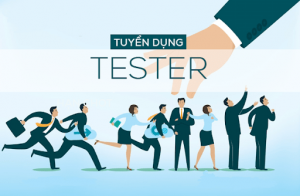
Technology within the statistical information system in Vietnam has achieved significant advancements, opening up promising new prospects. Under the direction of the Prime Minister, “Directive No. 28/CT-TTg” on the project “Application of information – communication technique in the National Statistical System for the period 2017-2025, vision to 2030” is being robustly implemented with specific directives to enhance the comprehensive development of the national statistics.
Key Breakthroughs in Directive No. 28/CT-TTg with Bright Prospects
Certainly, let’s delve into more detail regarding the key breakthroughs and remaining challenges outlined in Directive No. 28/CT-TTg.

Key Breakthroughs
- Advanced Technology Integration:
- Annual Census and Statistical Surveys: Substantial strides have been made in incorporating sophisticated technologies throughout the processes of annual census and statistical surveys. This includes the implementation of intelligent systems for data collection, analysis, and reporting, significantly enhancing accuracy and efficiency.
- Centralized Statistical Database Management:
- There’s been significant progress in centralizing and effectively managing statistical databases. The focus has been on creating a unified and structured database system, facilitating streamlined access, robust analysis, and data utilization across various sectors and agencies.
Remaining Challenges:
- Standardization and Integration of Administrative Data:
- Harmonizing and linking diverse administrative data sources pose persistent challenges. The aim is to standardize data formats, protocols, and quality to ensure seamless integration and consistency, enabling comprehensive analysis and informed decision-making.
- Optimal Utilization of Big Data:
- While advancements have been made in harnessing big data, there’s a continued challenge in maximizing its potential. Effectively extracting valuable insights from extensive and diverse datasets demands further development in analytics, tools, and methodologies.
- Innovative Statistical Information Dissemination:
- Addressing the evolving landscape of information consumption requires innovative approaches to disseminating statistical data. There’s a need to explore and adopt modern methods and platforms for presenting and sharing statistical insights in ways that resonate with diverse user preferences and trends.
- Adherence to New Trends:
- Embracing emerging trends in statistical practices and technique is crucial. Constant adaptation and innovation are essential to stay aligned with evolving methodologies, tools, and global best practices in statistical analysis and dissemination.
Addressing these challenges will be pivotal in advancing the objectives outlined in Directive No. 28/CT-TTg, ensuring a robust and efficient national statistical system aligned with modern data practices and technological advancements.
Remaining Challenges:
- Standardizing and Linking Administrative Data: One of the persisting challenges involves the standardization and integration of administrative data. This process aims to ensure that data from various administrative sources adhere to common standards, enabling seamless linkage and interoperability for comprehensive analysis.
- Efficient Utilization of Big Data Sources: While progress has been made in utilizing big data, optimizing its efficient use remains a challenge. Extracting meaningful insights from vast and diverse data sources requires robust analytical tools and methodologies, which might still need further development.
- Innovating Statistical Information Dissemination: To adapt to emerging trends, there’s a need to innovate the dissemination of statistical information. This involves exploring new methods and platforms for presenting and sharing statistical data to cater to evolving user preferences and information consumption habits.
These challenges are pivotal areas requiring focused attention and continuous development efforts to further enhance the effectiveness and capabilities of the statistical system outlined in Directive No. 28/CT-TTg.
Tinasoft – The Gateway to National Modernization

With nearly a decade of experience in information technique and software, Tinasoft is committed to supporting the implementation of the scheme “Application of information – communication technique in the National Statistical System.” We pledge to offer advanced solutions, from connecting administrative data to effectively leveraging big data sources for accurate and efficient statistical indicator compilation.
Tinasoft Solutions – A Smart Choice for Statistical Technology
Tinasoft is not merely a leading software company; it’s also a reliable partner in applying ICT in the statistical field. Our focus lies in providing intelligent solutions to enhance the statistical system, aiming for higher efficiency and accuracy.
- Administrative Data Connection: Tinasoft focuses on standardizing, connecting, and sharing administrative data, establishing a foundation for building statistical databases.
- Big Data Research and Application: We collaborate with the Ministry of Information and Communications, the Ministry of Science and Technique, and the Ministry of Natural Resources and Environment to research and apply modernization in statistical work.
- Support for Enhancing ICT Technical Infrastructure: Tinasoft commits to supporting the agencies responsible for scheme execution in upgrading and expanding information-communication Technique infrastructure.
Reliable Partner – Supporting Your Success
We believe that, with our mission, Tinasoft will accompany the modernization process outlined in the directive for the national statistics. Technology is not only a tool but also the key to unlocking sustainable and accurate statistical development, progressively contributing to the country’s comprehensive advancement.
Contact us now for consultation and support in modernizing your statistical solutions. Partner with us in development, Tinasoft – The key to national statistical modernization.













